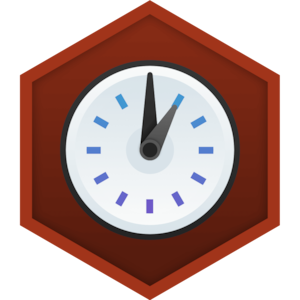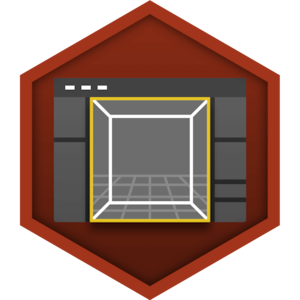Choose your operating system:
Windows
macOS
Linux
The Menu Bar in the editor should be familiar to anyone who has used Windows applications previously. It provides access to general tools and commands that are used when working with levels in the editor.
File
|
Command |
Description |
|
|---|---|---|
|
Load and Save |
||
|
New Level |
Create a new level, or choose a level template to start from. |
|
|
Open Level |
Load an existing level. |
|
|
Save Current |
Save the current level to disk. |
|
|
Save Current As |
Save the current persistent map using the given name. |
|
|
Save All Levels |
Save all unsaved loaded levels, including streaming levels. |
|
|
Open Asset |
Summon an asset picker. |
|
|
Save All |
Save all unsaved levels and assets. |
|
|
Choose Files to Save |
Open a dialog with save options for levels and content. |
|
|
Submit to Source Control |
Only displays when source control is running. Open a dialog with check in options for content and levels. |
|
|
Connect to Source Control |
Only displays when source control is not running. Open a dialog with a dropdown of source control providers that can be selected. |
|
|
Project |
||
|
New Project |
Open a dialog to create a new game project. |
|
|
Open Project |
Open a dialog to select an existing project. |
|
|
New C++ Class |
Add C++ code to the project. The code can only be compiled if you have Visual Studio installed. |
|
|
Package Project |
Display a dropdown of options to compile, cook and package your project and its content for distribution. Supported platforms that you can build display by default at the top of the dropdown. |
|
|
Cook Content |
Cook your project's content for a specific platform. This is useful if you run a code-based project from Visual Studio. |
|
|
Generate Visual Studio Project |
If C++ code is not added to the project, this command is grayed out. Select Add New C++ Class to display the two following Project options. |
|
|
Open Visual Studio |
Open your C++ code in Visual Studio. |
|
|
Refresh Visual Studio Project |
Refresh your C++ code project in Visual Studio. |
|
|
Data Validation |
||
|
Validate Data |
||
|
Actors |
||
|
Import Into Level |
Import Objects and Actors from an FBX or T3D format into the current level. |
|
|
Export All |
Export the entire Level to a file on disk (multiple formats are supported.) |
|
|
Export Selected |
Export currently selected objects to a file on disk (multiple formats are supported.) |
|
|
Favorite Levels |
Only displays if there is at least one saved level. Set whether the currently loaded level will appear in the list of favorite levels. |
|
|
Recent Levels |
Only displays if there at least one saved level. Select a level to load. |
|
|
Recent Projects |
Select a project to switch to. |
|
|
Exit |
Exit the application. |
|
Edit
|
Command |
Description |
|
|---|---|---|
|
History |
||
|
Undo |
Undo the last completed action. |
|
|
Redo |
Redo the last undone action. |
|
|
Undo History |
Open a dialog with prior Undo operations. |
|
|
Edit |
||
|
Cut |
Cut selection. |
|
|
Copy |
Copy selection. |
|
|
Paste |
Paste clipboard contents. |
|
|
Duplicate |
Duplicate selection. |
|
|
Delete |
Delete current selection. |
|
|
Configuration |
||
|
Editor Preferences |
Configure the behavior and features of this editor. See
|
|
|
Project Settings |
Change the settings of the currently loaded project. See
|
|
|
Plugins |
Open the Plugins browser where these can be enabled or disabled for the current project. |
|
Window
|
Command |
Description |
|
|---|---|---|
|
Level Editor |
||
|
Cinematics |
Display a dropdown of Sequencer options. |
|
|
Details |
Show the Details panel, which provides access to various properties for selected objects. You can show up to four Details panels simultaneously. |
|
|
Editor Modes |
Display a dropdown where you can select the Active Mode Toolbox panel or the Active Mode Toolbar for that panel, which accesses special level-editing tools for the currently selected Editor Mode. |
|
|
Viewports |
Show the Viewport, which is your view into the 3D world of your game. You can show up to four Viewports simultaneously. |
|
|
Camers Shake Previewer |
Open the Camera Shake Preview dialog, where you can play all or selected camera shakes. |
|
|
Hierarchical LOD Outliner |
Display the HLOD settings and allow generation of clusters. |
|
|
Layers |
Open the Layers panel, where you can divide your level into a series of visibility layers. |
|
|
Levels |
Open the Levels panel which displays the persistent and all streaming levels. |
|
|
Place Actors |
Open the Place Actors panel, which allows you to select Actors that you can place in the Level. |
|
|
Statistics |
Show the Statistics panel, which provides access to a variety of performance stats for the Level. |
|
|
Toolbar |
Show the Toolbar , which contains a variety of common functions you will perform during level editing. |
|
|
World Outliner |
Open the World Outliner , a hierarchical breakdown of all the Actors currently in the level. |
|
|
World Settings |
Show the World Settings panel, where you can find settings specific to the level you are currently editing. |
|
|
General |
||
|
Content Browser |
Opens up to four separate Content Browsers . Useful when copying Assets from one project to another. |
|
|
Developer Tools |
Display a dropdown of Developer Tools that are useful for programmers working with the engine and editor. |
|
|
Find in Blueprints |
Find references to functions, events, variables, and pins in all Blueprints. |
|
|
Project Launcher |
Open the Project Launcher dialog, where you can package, deploy, and launch your Project. |
|
|
Testing |
||
|
Test Automation |
Only displays in the menu if there are active automation tool plugins. Open the Session Frontend dialog that provides access to the Automation System. |
|
|
Automation Tools |
Only displays in the menu if there are active automation tool plugins. Display a list of installed automation tool plugins that can run unattended processes related to Unreal Engine. |
|
|
Layout |
||
|
Load Layout |
Load the default layout or load a layout from another directory. |
|
|
Save Layout |
Save the current user interface layout. |
|
|
Remove Layout |
Delete the user layout(s) from the disk. |
|
|
Enable Fullscreen |
Toggle the editor between fullscreen and normal modes. |
|
Help
|
Command |
Description |
|
|---|---|---|
|
Browse |
||
|
Documentation |
Open the main documentation page. |
|
|
API Reference |
Open the API Reference documentation. |
|
|
Console Variables |
Generate an HMTL file with a list of console variables and commands. |
|
|
Viewport Controls |
Open the Viewport Controls cheat sheet. |
|
|
Tutorials |
||
|
Tutorials |
Open up introductory tutorials covering the basics of using the Unreal Engine 4 Editor. |
|
|
Bugs |
||
|
Report a Bug |
Display Unreal Engine Bug Submission form. |
|
|
Issue Tracker |
Display the Unreal Engine Issues page. |
|
|
Help Online |
||
|
Support |
Display the Unreal Engine Support and Resources page. |
|
|
Forums |
Display the official Forums page, containing announcements and discussion groups. |
|
|
Answer Hub |
Display the Unreal Engine home page. |
|
|
Wiki |
Display the community-hosted Unreal Wiki home page. |
|
|
Visit UnrealEngine.com |
Open a web browser window displaying the Unreal Engine home page. |
|
|
Credits |
Display credits for the community developers and Epic Games employees that contributed to the current version of Unreal Engine. |
|
|
Application |
||
|
About Unreal Editor |
Open the About dialog displaying information about the engine version. |
|







